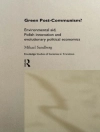On Bloody Sunday, January 30, 1972, British paratroopers killed thirteen innocent men in Derry. It was one of the most controversial events in the history of the Northern Ireland conflict and also one of the most mediated. The horror was recorded in newspapers and photographs, on TV news and current affairs and in film and TV drama. In a cross media analysis that spans a period of almost forty years up to the publication of the Saville Report in 2010, The British Media and Bloody Sunday identifies two countervailing impulses in media coverage of Bloody Sunday and its legacy: an urge in the press to rescue the image and reputation of the British Army versus a troubled conscience in TV current affairs and drama about what was done in Britain’s name. In so doing, it suggests a much more complex set of representations than a straightforward propaganda analysis might allow for – one that says less about the conflict in Ireland than it does about Britain, with its loss of empire and its crisis of national identity.
Cuprins
Chapter 1: The British Media and Bloody Sunday: An introduction
Chapter 2: The British press, Bloody Sunday and the Widgery Report
Chapter 3: The British press and the Saville Report
Chapter 4: Inside stories and secret histories: British television investigates Bloody Sunday
Chapter 5: Sunday and Bloody Sunday: Very British tragedies?
Chapter 6: The British Media and Bloody Sunday: Lest they forget
Despre autor
Stephen Baker is a lecturer in film and television studies. He researches in the area of media, culture and politics.
Contact: Ulster University, York St, Belfast, BT15 1ED, UK.












